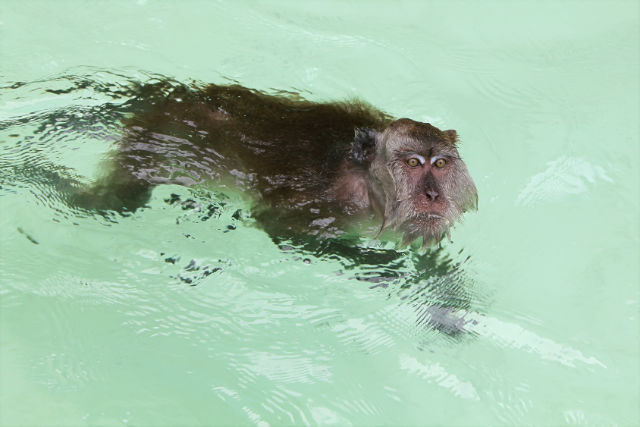

The western hoolock gibbon might be found in southeastern Tibet. The eastern hoolock gibbon, which are distinguished by white tufts of hair above the eyebrows, are found in western Yunnan, along the border with Myanmar. Two of the individuals were released into the wild but still relied on tourists for food. As of 2008, a captive population of eight northern white-cheeked gibbons was living in the Mengyang Nature Reserve. The northern white-cheeked gibbon is nearly extinct in the wilderness of southern Yunnan where they are hunted by local people as charms of good luck and for their bones which are made into weaving instrument and chopsticks. A survey in November 2007 in the Nangunhe National Nature Reserve yielded no sign of this gibbon. The animal was last observed by zoologists in 1988 and its call was last heard by locals in 2002. The Yunnan lar gibbon, a subspecies of the lar or white-handed gibbon, might be extinct in China. The black crested gibbon is found across a greater swath of southwestern China. About 99% of this ape's habitat in China has been lost. The eastern black crested gibbon is nearly as rare with only 20 or so in the Guangxi Zhuang Autonomous Region along with 30 in neighboring Vietnam.

Like many other gibbons, male Hainan black crested gibbons are black in color while females are golden brown. Endemic to the island of Hainan, there are fewer than 30 individuals left in the Bawangling National Nature Reserve. The Hainan black crested gibbon is among the rarest and most endangered apes. Gibbons can be recognized by their loud calls, with mating pairs often singing together as a duet. Gibbons are tree dwellers which use their long arms to swing from branches. The only apes native to China are gibbons. Ī female northern white-cheeked gibbon grooming a male Endangered wildlife is protected by law, and as of 2005, the country has over 2,349 nature reserves, covering a total area of 149.95 million hectares (578,960 square miles), about 15 percent of China's total land area.

At least 840 species are threatened, vulnerable or in danger of local extinction in China, due mainly to human activity such as habitat destruction, pollution and poaching for food, fur and ingredients for traditional Chinese medicine. Wildlife in China share habitat with and bear acute pressure from the world's largest population of humans. In all, about one-sixth of mammal species and two-thirds of amphibian species in China are endemic to the country. Many species of animals are endemic to China, including the country's most famous wildlife species, the giant panda. In terms of the number of species, China ranks third in the world in mammals, eighth in birds, seventh in reptiles and seventh in amphibians. As of one of 17 megadiverse countries in the world, China has, according to one measure, 7,516 species of vertebrates including 4,936 fish, 1,269 bird, 562 mammal, 403 reptile and 346 amphibian species. The snub-nosed monkey, another endangered and endemic speciesĬhina's vast and diverse landscape is home to a profound variety and abundance of wildlife. The giant panda is endemic to China, where it is an endangered and protected species.


 0 kommentar(er)
0 kommentar(er)
